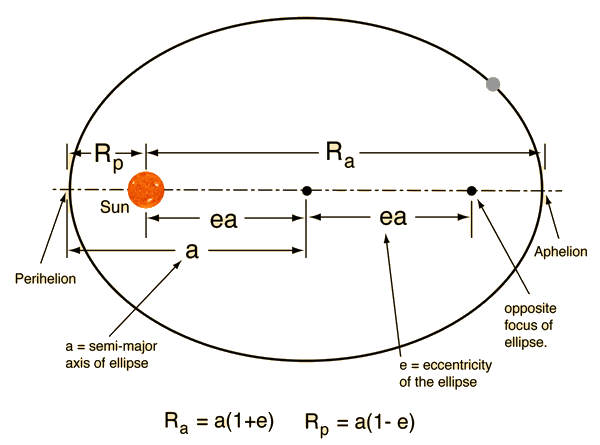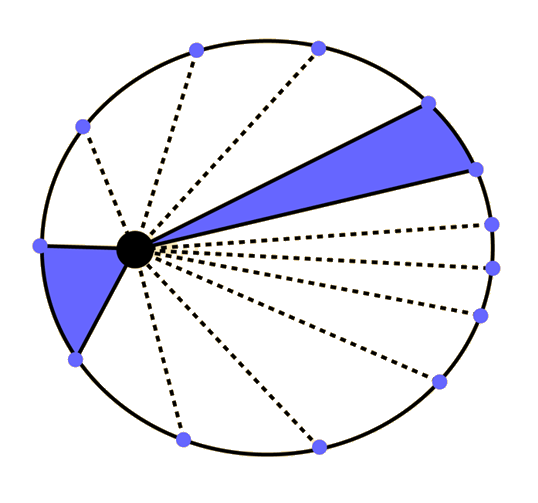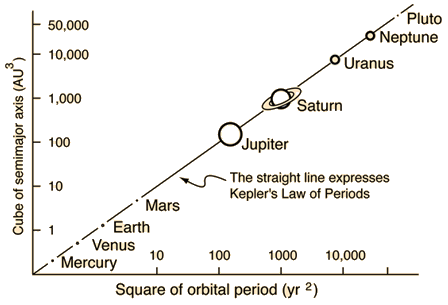Johannes Kepler, working with data painstakingly collected by Tycho Brahe without the aid of a telescope, developed three laws which described the motion of the planets across the sky.
1. The Law of Orbits: All planets move in elliptical orbits, with the sun at one focus.
The Law of Orbits
All planets move in elliptical orbits, with the sun at one focus.

2. The Law of Areas: A line that connects a planet to the sun sweeps out equal areas in equal times.
The Law of Areas
A line that connects a planet to the sun sweeps out equal areas in equal times.
 | This is one of Kepler's laws.This empirical law discovered by Kepler arises from conservation of angular momentum. When the planet is closer to the sun, it moves faster, sweeping through a longer path in a given time. |
3. The Law of Periods: The square of the period of any planet is proportional to the cube of the semimajor axis of its orbit.
The Law of Periods
The square of the period of any planet is proportional to the cube of the semimajor axis of its orbit.
 |  |

Kepler's Law of Periods in the above form is an approximation that serves well for the orbits of the planets because the Sun's mass is so dominant. But more precisely the law should be written

In this more rigorous form it is useful for calculation of the orbital period of moons or other binary orbits like those of binary stars.
Source: http://hyperphysics.phy-astr.gsu.edu

No comments:
Post a Comment